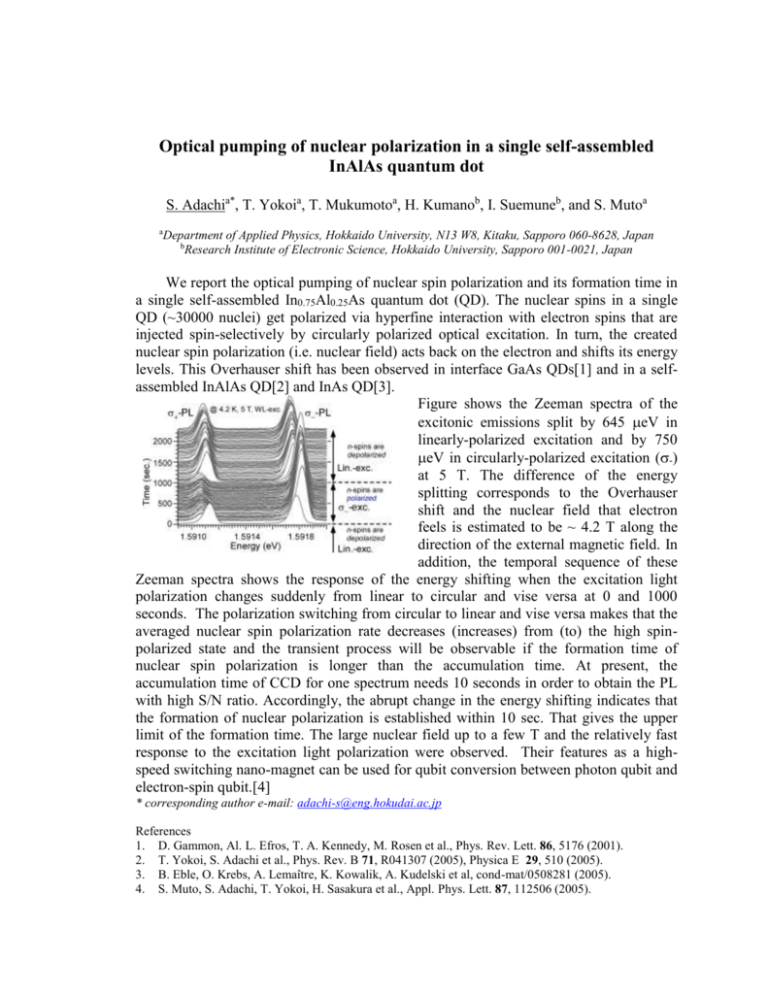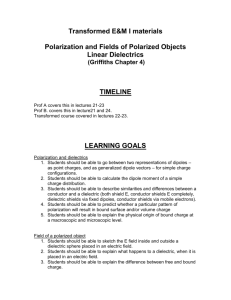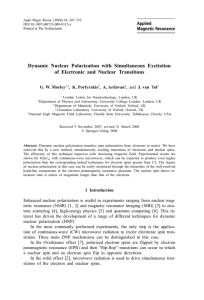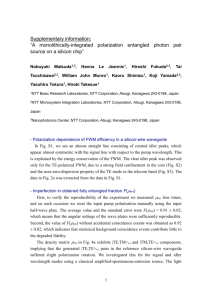Optical pumping of nuclear polarization in a single
advertisement

Optical pumping of nuclear polarization in a single self-assembled InAlAs quantum dot S. Adachia*, T. Yokoia, T. Mukumotoa, H. Kumanob, I. Suemuneb, and S. Mutoa a Department of Applied Physics, Hokkaido University, N13 W8, Kitaku, Sapporo 060-8628, Japan b Research Institute of Electronic Science, Hokkaido University, Sapporo 001-0021, Japan We report the optical pumping of nuclear spin polarization and its formation time in a single self-assembled In0.75Al0.25As quantum dot (QD). The nuclear spins in a single QD (~30000 nuclei) get polarized via hyperfine interaction with electron spins that are injected spin-selectively by circularly polarized optical excitation. In turn, the created nuclear spin polarization (i.e. nuclear field) acts back on the electron and shifts its energy levels. This Overhauser shift has been observed in interface GaAs QDs[1] and in a selfassembled InAlAs QD[2] and InAs QD[3]. Figure shows the Zeeman spectra of the excitonic emissions split by 645 eV in linearly-polarized excitation and by 750 eV in circularly-polarized excitation (-) at 5 T. The difference of the energy splitting corresponds to the Overhauser shift and the nuclear field that electron feels is estimated to be ~ 4.2 T along the direction of the external magnetic field. In addition, the temporal sequence of these Zeeman spectra shows the response of the energy shifting when the excitation light polarization changes suddenly from linear to circular and vise versa at 0 and 1000 seconds. The polarization switching from circular to linear and vise versa makes that the averaged nuclear spin polarization rate decreases (increases) from (to) the high spinpolarized state and the transient process will be observable if the formation time of nuclear spin polarization is longer than the accumulation time. At present, the accumulation time of CCD for one spectrum needs 10 seconds in order to obtain the PL with high S/N ratio. Accordingly, the abrupt change in the energy shifting indicates that the formation of nuclear polarization is established within 10 sec. That gives the upper limit of the formation time. The large nuclear field up to a few T and the relatively fast response to the excitation light polarization were observed. Their features as a highspeed switching nano-magnet can be used for qubit conversion between photon qubit and electron-spin qubit.[4] * corresponding author e-mail: adachi-s@eng.hokudai.ac.jp References 1. D. Gammon, Al. L. Efros, T. A. Kennedy, M. Rosen et al., Phys. Rev. Lett. 86, 5176 (2001). 2. T. Yokoi, S. Adachi et al., Phys. Rev. B 71, R041307 (2005), Physica E 29, 510 (2005). 3. B. Eble, O. Krebs, A. Lemaître, K. Kowalik, A. Kudelski et al, cond-mat/0508281 (2005). 4. S. Muto, S. Adachi, T. Yokoi, H. Sasakura et al., Appl. Phys. Lett. 87, 112506 (2005).





![The Politics of Protest [week 3]](http://s2.studylib.net/store/data/005229111_1-9491ac8e8d24cc184a2c9020ba192c97-300x300.png)





